Invasive plants, or noxious weeds, displace plants endemic to Idaho and can significantly alter native ecosystems. They can increase erosion, alter soil composition, impact water flow and silt buildup in waterways, and reduce wildlife habitat. In the garden, noxious weeds may be masquerading as cultivated plants, or perhaps they lurk among the weeds. Learning about invasive plants in Idaho will enable you to identify them in your garden and replace them with beautiful native plants that contribute to, rather than degrade, the natural environment.
Invasive Plants in Idaho- 1. Brazilian elodea (Egeria densa)
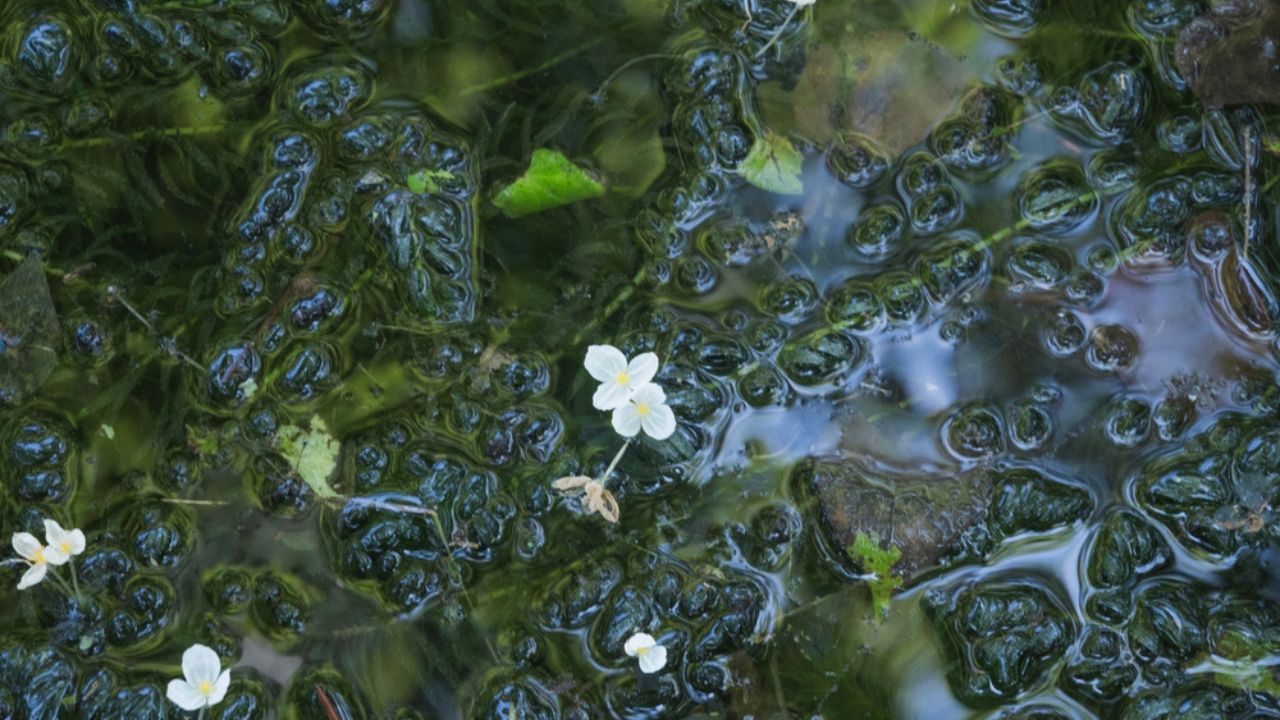
Image Credit: Shutterstock.
While many noxious weeds grow in Idaho, the following list contains some of the most common, and perhaps some of the worst, invasive plants found in backyard landscapes. If you find an invasive plant on your property, contact your local Extension office for guidance on how to properly remove it. Up first is the Brazilian Edolea.
A popular aquarium plant, Brazilian elodea has been introduced to waterways, where it forms large, dense mats. This submerged aquatic plant impedes water flow, traps sediment, and alters water quality, including oxygen levels. It can also impact recreational activities.
The slender, branched stems are covered in narrow, finely toothed leaves arranged in whorls of four to six, and the white, floating flowers have three petals and yellow centers. Similar native plants include Canadian waterweed (Elodea canadensis) and western waterweed (Elodea nuttallii).
2. Knotweed (Polygonum sp.)
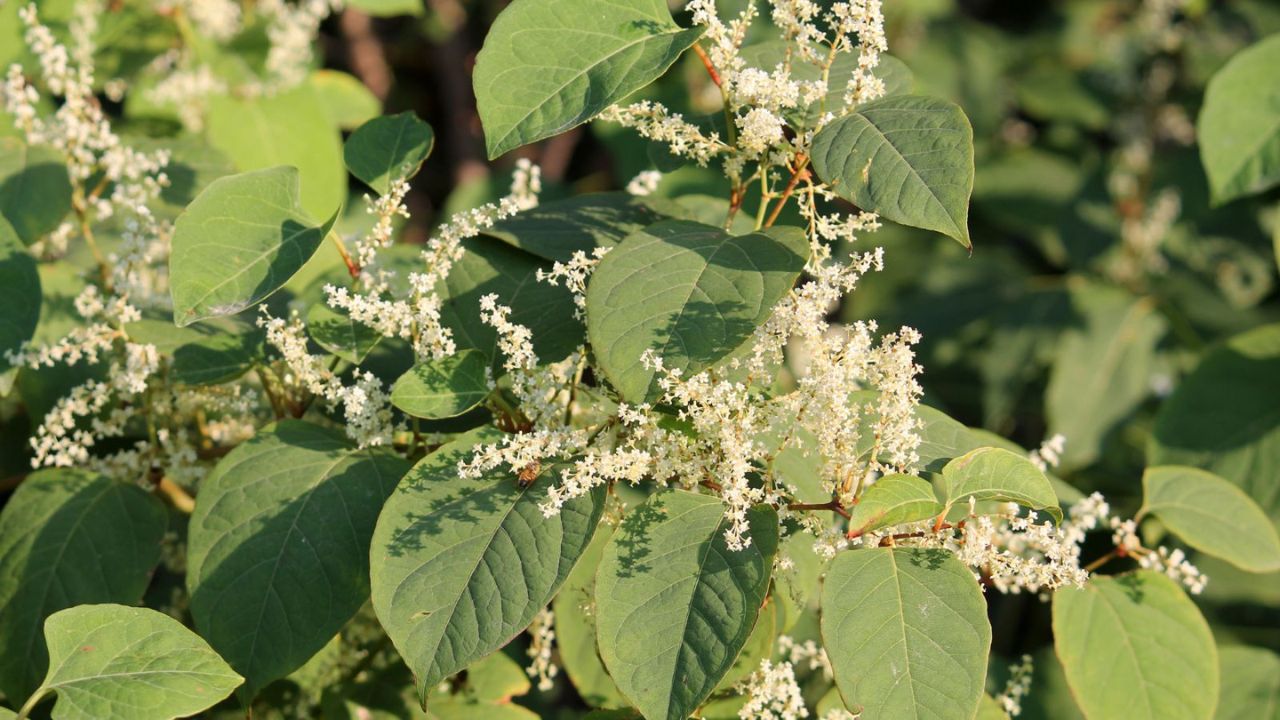
Image Credit: Depositphotos.
Four types of invasive knotweed have been recorded growing in Idaho: Bohemian, Giant, Himalayan, and Japanese. They grow in ditches, swamps, marshes, and wet forests. Look for alternate, willow-like leaves with sheaths at the bases surrounding the stem. The small, white or pink flowers appear in terminal spikes.
Mountain snowberry (Symphoricarpos oreophilus) and western meadow rue (Thalictrum occidentale) are two lovely native alternatives.
3. Mediterranean sage (Salvia aethiopis)
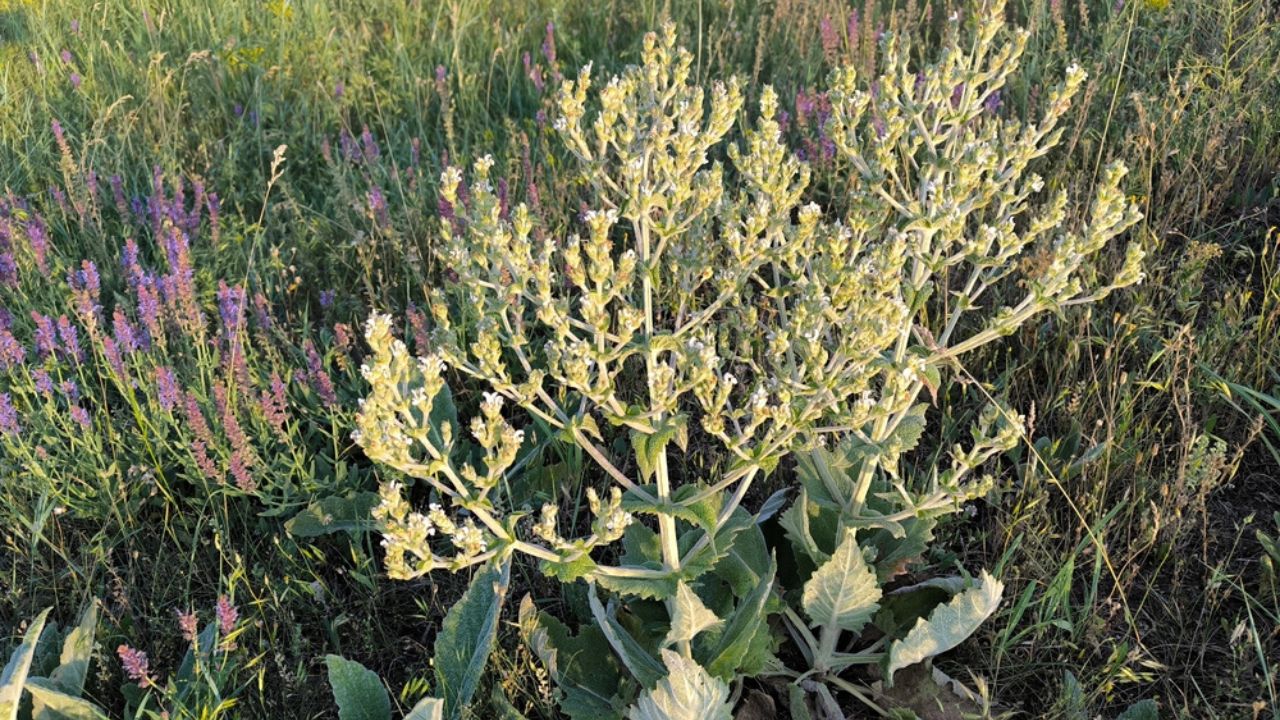
Image Credit: Shutterstock.
A biennial or short-lived perennial, Mediterranean sage (see a picture here) gets its name from the sage-like odor the leaves give off when crushed. Fine hairs cover all surfaces of this erect plant, which becomes less woolly with maturity. The square, many-branched flowering stems produce masses of tiny whitish flowers.
Plant native sagebrush or wormwood instead, like sand sagebrush (Artemisia filifolia), which has lovely foliage, or white mugwort (A. lactiflora), a species with attractive flowers.
4. Oxeye Daisy (Leucanthemum vulgare)
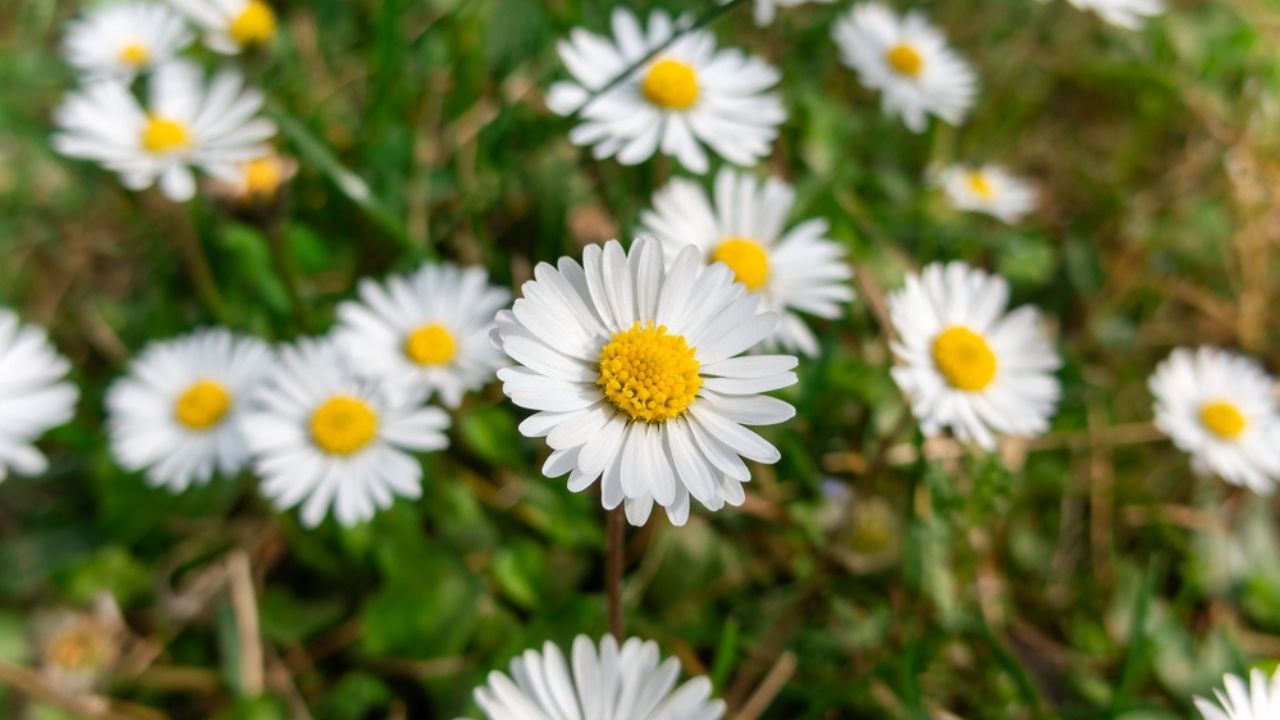
Image Credit: Shutterstock.
The classic, cheery oxeye daisy is, unfortunately, a highly invasive perennial that can take over meadows and pastures, out-competing native plants. It can be easily identified by its solitary flowers with white petals and golden yellow centers. Toothed, spatula-shaped basal leaves help identify the plant when it’s not in bloom.
Many beautiful native wildflowers bring cheer to the landscape, such as sunny tickseed (Coreopsis sp.) and bright alpine aster (Aster alpinus).
5. Parrotfeather Milfoil (Myriophyllum aquaticum)
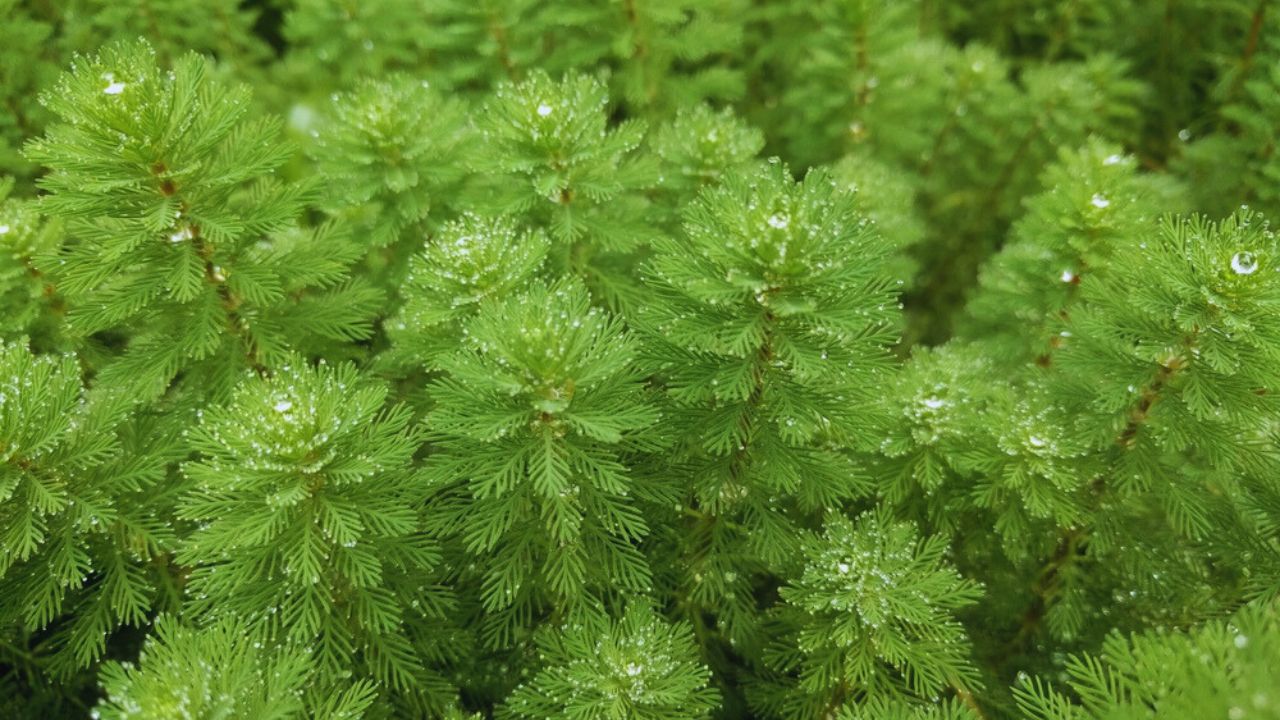
Image Credit: Shutterstock.
Parrotfeather milfoil, a submerged to emergent aquatic plant found in ponds, lakes, streams, and canals, grows into dense mats that can clog waterways and provide habitat for mosquitos. Its bright green, feathery leaves grow in whorls of four to six on stout, blue-green stems.
Native mare’s tail (Hippuris vulgaris) looks very similar, and common hornwort (Ceratophyllum demersum) has a feathery appearance as well.
6. Purple Loosestrife (Lythrum salicaria)
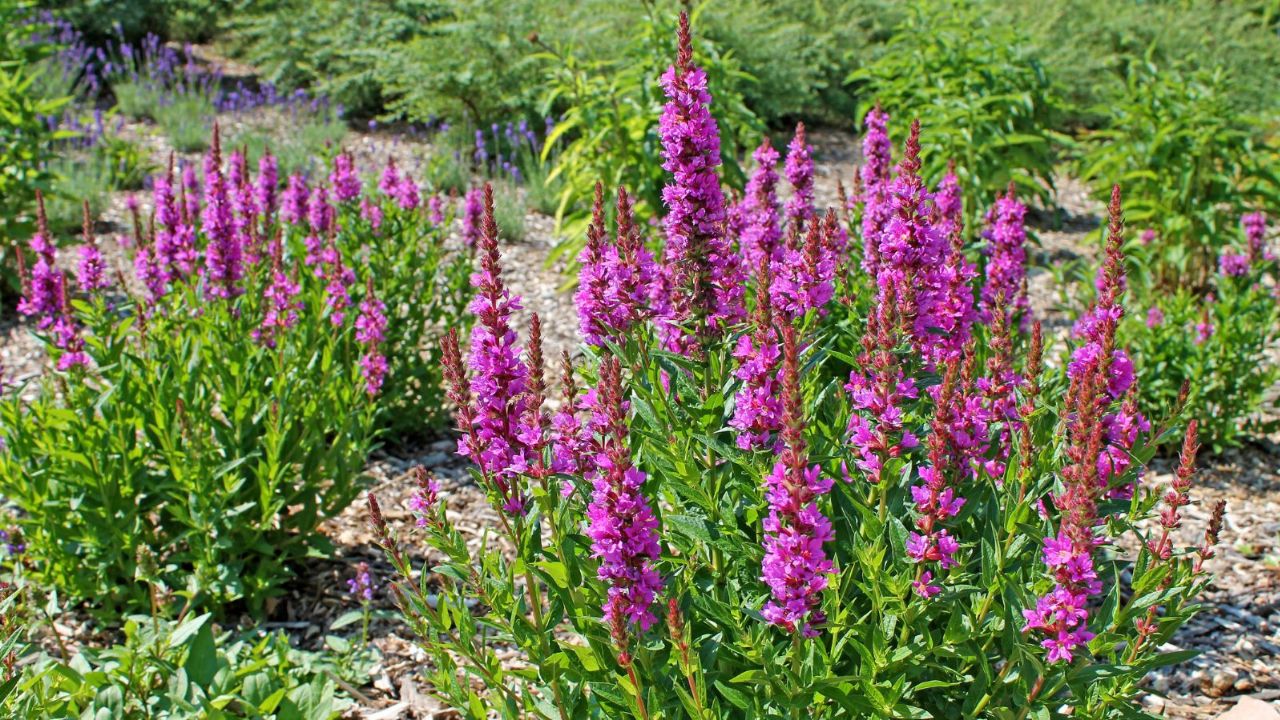
Image credit: Depositphotos.
This tall, semi-aquatic perennial grows densely, with up to fifty stems per plant giving it a bushy appearance. Aptly named, purple loosestrife has showy purple or magenta flower spikes on green to purple stems. Smooth, lance-shaped leaves grow from each node.
Native wildflowers with pink flower clusters include Joe Pye weed (Eutrochium maculatum), which also likes moist soil, and fireweed (Chamerion angustifolium).
7. Saltcedar (Tamarix sp.)
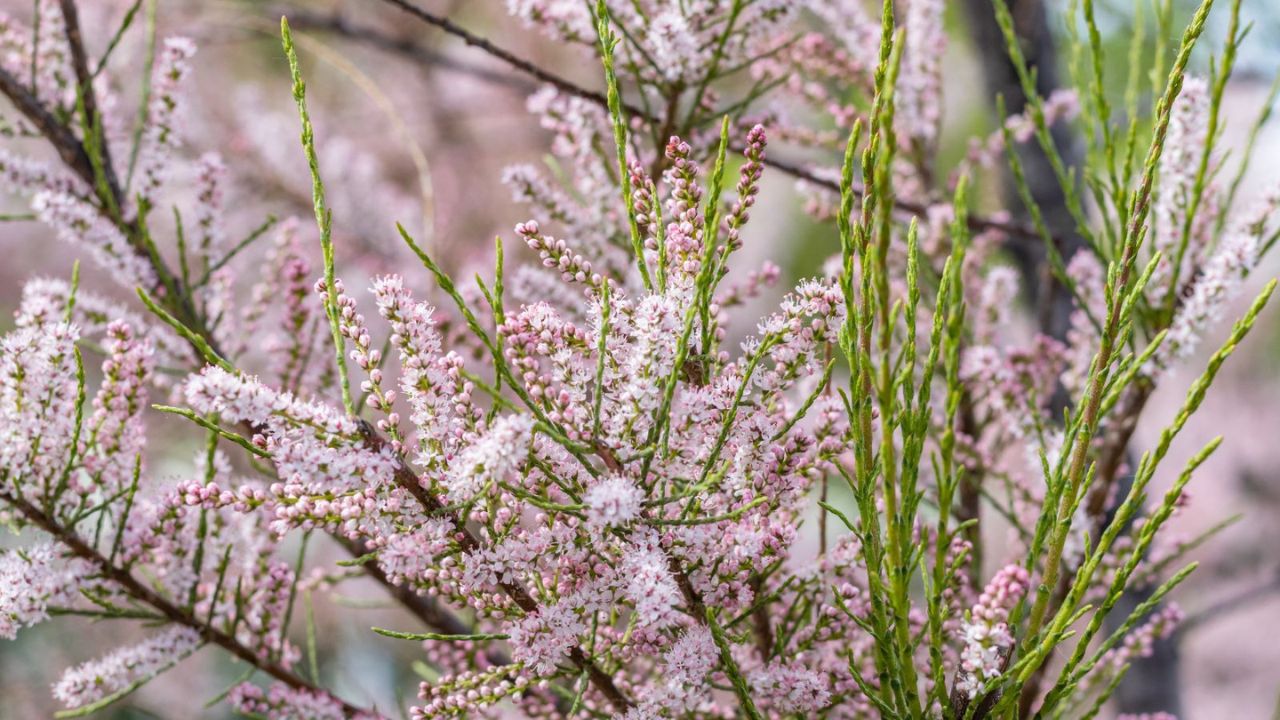
Image credit: Depositphotos.
Saltcedars range in height from five to 20 feet, taking the shape of a shrub or small tree. They absorb a significant amount of water and outcompete native riparian plants, like willows and cottonwoods. Saltcedars get their name from the tendency to pull salt from deep underground and excrete it from their leaves onto the soil surface, inhibiting the growth of other plants.
The small, scalelike leaves resemble juniper foliage, and clusters of white to pink flowers bloom at the ends of branches.
Plant western juniper (Juniperus occidentalis), which has similar leaves, or one of the native willows displaced by saltcedars, like long-beaked willow (Salix bebbiana).
8. Water Hyacinth (Eichhornia crassipes)
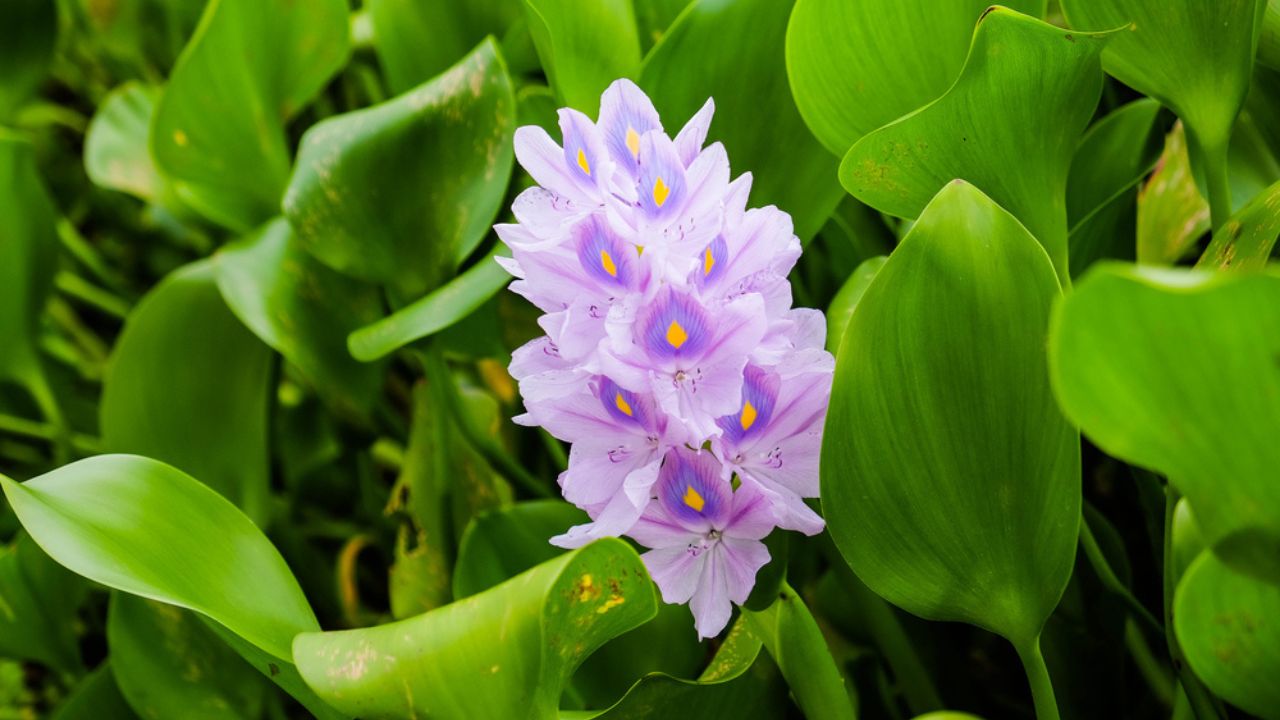
Image Credit: Shutterstock.
The prolific water hyacinth grows quickly and aggressively into dense mats that clog waterways. It has large, ovate, emergent leaves with spongy, bulbous stems. Each plant produces a single spike of purple flowers, each with a yellow, diamond-shaped patch on one of its six petals.
Similar native freshwater plants include yellow pond-lily (Nuphar lutea) and water fern (Azolla filiculoides).
9. Yellow Flag Iris (Iris pseudacorus)
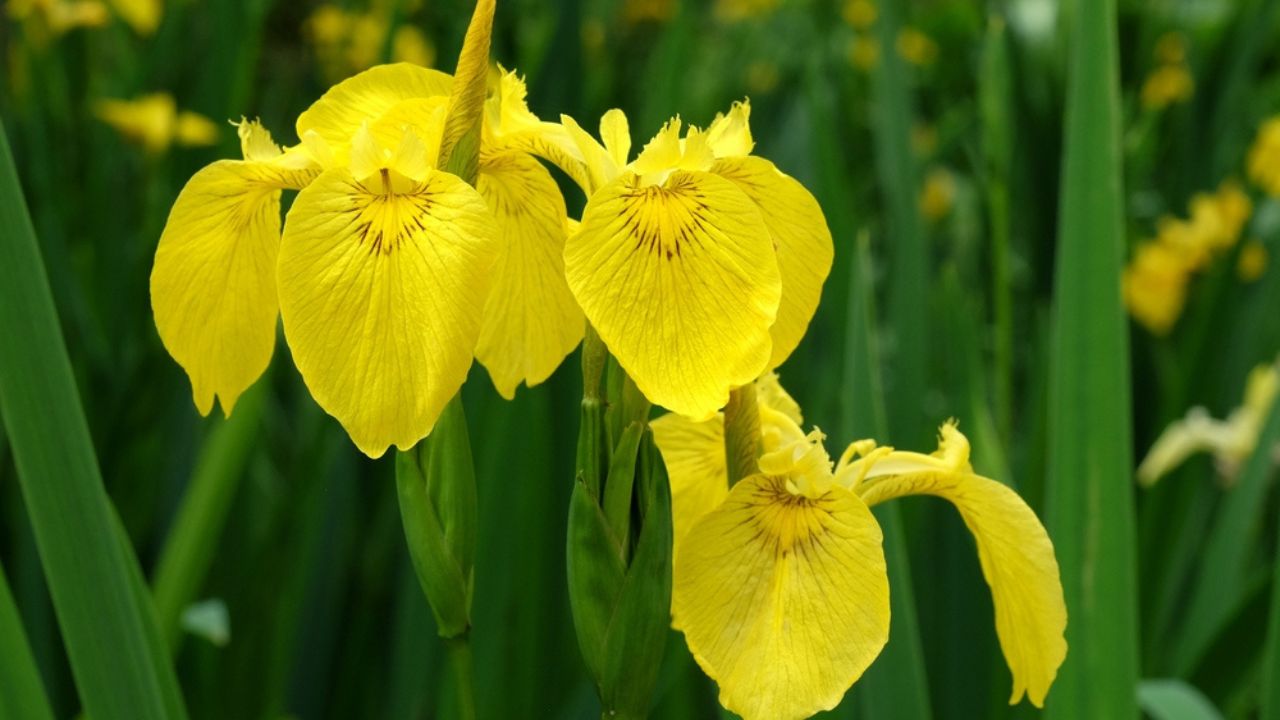
Image Credit: Shutterstock.
An aquatic perennial, yellow flag iris grows along the edges of waterways. It displaces native vegetation, degrades wildlife habitat, reduces the width of streams, and impacts soil composition. The flattened, sword-shaped leaves grow up to four feet long and can be distinguished from cattails by the presence of a midrib, which cattails lack. The showy yellow flowers sometimes have brown or purple veins at the base of the petals.
Plant natives like sweet flag (Acorus calamus) or camas (Camassia quamash) instead.
Want to learn more? The University of Idaho Extension offers a comprehensive guide on invasive plants in the state to help you quickly identify noxious weeds. You can also check out our other handy lists of invasive plants by state, as well as more details on invasive plants in general and how to curb their spread.

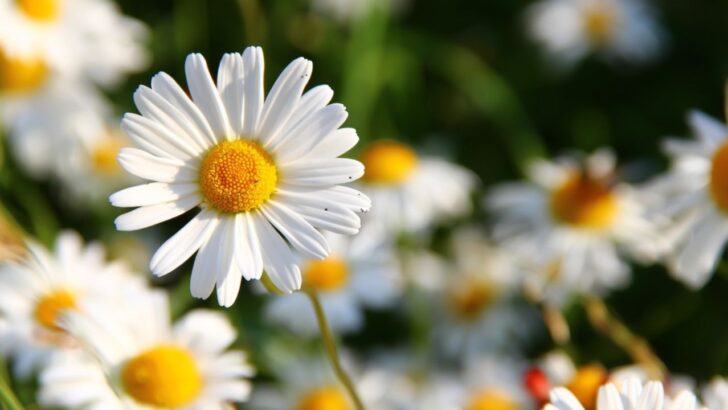

Free Daisy Flower Coloring Pages
Saturday 11th of March 2023
[…] daisies are invasive. Although daisies are beautiful, varieties like oxeye daisies are invasive plants that out-compete native […]